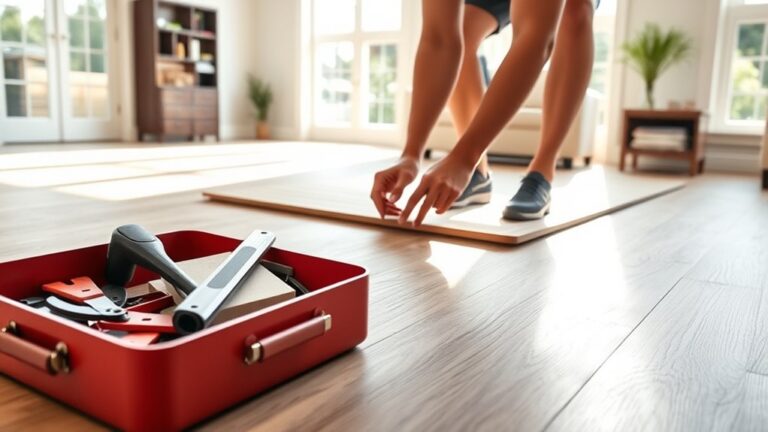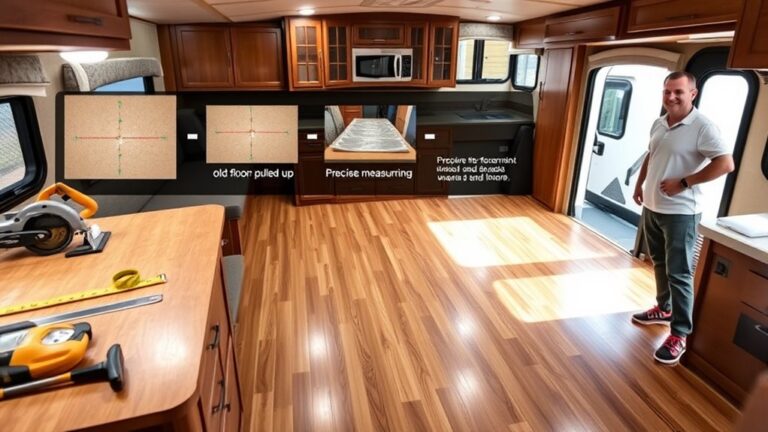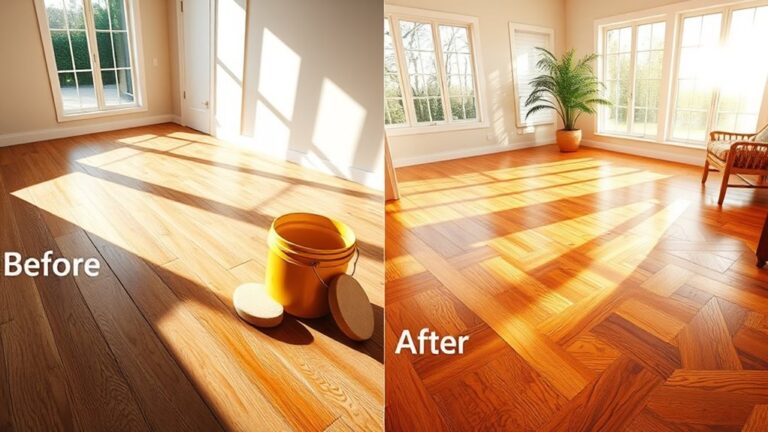To make your hardwood floors less slippery, start by identifying if the finish is wax-based or too glossy, then clean thoroughly with a pH-neutral cleaner, avoiding excess water. Next, apply a specially formulated non-slip coating evenly and let it cure fully. Place low-pile, well-secured rugs in high-risk spots to enhance grip. Finally, maintain safety by regularly inspecting for wear and moisture buildup. Taking these steps sets the foundation for safer flooring, with additional tips available to optimize results.
Identify Causes of Slipperiness on Hardwood Floors

Before you can effectively reduce slipperiness on hardwood floors, you need to understand the primary factors causing the hazard. One critical element is the type and condition of the floor finish; glossy or wax-based finishes often create a slick surface, especially when polished excessively or worn unevenly. Additionally, the shoe type greatly influences traction—smooth-soled shoes, like dress shoes or socks, decrease grip and increase slip risk. Environmental factors, such as moisture and dust accumulation, also alter surface friction but are secondary to finish and footwear. By pinpointing these causes, you gain the freedom to choose appropriate interventions. Whether selecting a matte, anti-slip floor finish or advising suitable footwear, addressing these specific variables empowers you to enhance safety without compromising the aesthetic or functional qualities of your hardwood floors.
Clean and Prepare the Floor Surface Properly
Properly cleaning and preparing your hardwood floor surface is essential for reducing slipperiness and ensuring any treatments adhere effectively. Start by focusing on thorough floor cleaning to remove dirt, dust, and any oily residues that contribute to slipperiness. Follow these steps for ideal surface preparation:
Thoroughly clean and prepare hardwood floors to reduce slipperiness and ensure treatments adhere properly.
- Vacuum or sweep the entire floor to eliminate loose debris.
- Use a pH-neutral hardwood floor cleaner with a microfiber mop, avoiding excess water to prevent damage.
- Allow the floor to dry completely before proceeding with any further treatment.
This precise surface preparation creates a clean, dry base, maximizing the effectiveness of non-slip solutions applied afterward. Neglecting these steps risks poor adhesion, reducing safety and freedom of movement on your hardwood floors.
Apply Non-Slip Treatments and Coatings
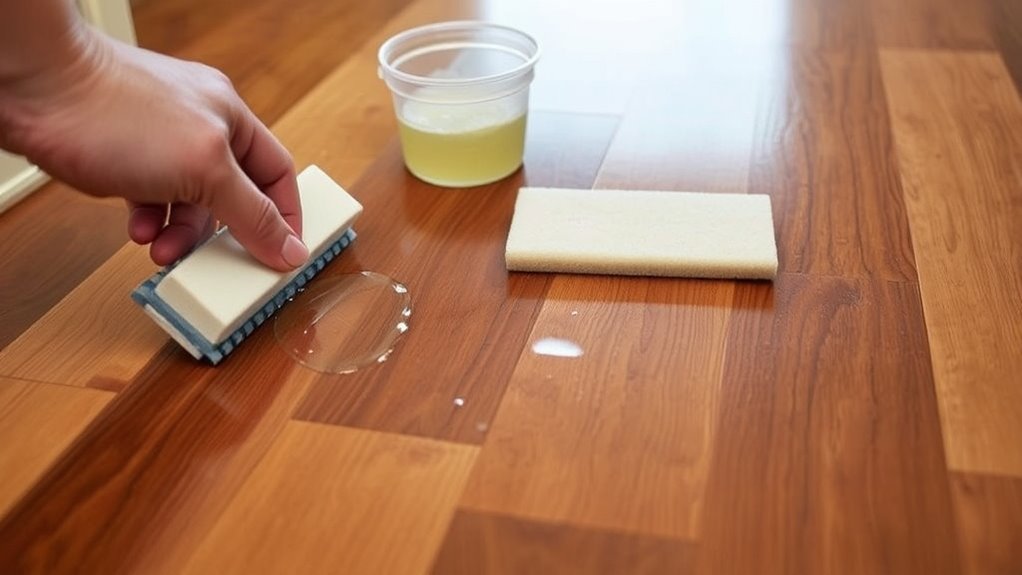
Once your hardwood floor is completely clean and dry, you can move on to applying non-slip treatments and coatings designed to increase traction. Start by selecting a non slip coating specifically formulated for hardwood surfaces; these coatings enhance grip without compromising the wood’s natural finish. Apply the coating evenly using a roller or brush, guaranteeing full coverage. Some products include additives that create microscopic surface textures, which greatly reduce slipperiness by increasing friction underfoot. Allow the treatment to cure fully according to the manufacturer’s instructions, typically 24 to 48 hours, before walking on it. This process guarantees the coating bonds properly, delivering durable slip resistance. By carefully choosing and applying these non slip coatings, you maintain your hardwood’s aesthetic while enhancing safety and preserving your freedom of movement.
Use Rugs and Mats Strategically
Strategically placing rugs and mats on hardwood floors can greatly reduce slipperiness by providing targeted traction in high-risk areas. To optimize rug placement, focus on entryways, hallways, and areas near sinks or stairs, where slips are most likely. Choose mat materials that offer strong grip without damaging your floor’s finish—natural rubber backings or non-slip pads work well. Additionally, consider:
- Using low-pile rugs to minimize tripping hazards while maximizing surface friction
- Securing rugs with double-sided tape or non-slip underlays to prevent shifting
- Selecting moisture-wicking materials in mats near water-prone zones to keep floors dry
This approach lets you maintain freedom of movement while greatly enhancing safety on hardwood floors.
Maintain and Monitor Floor Safety Regularly
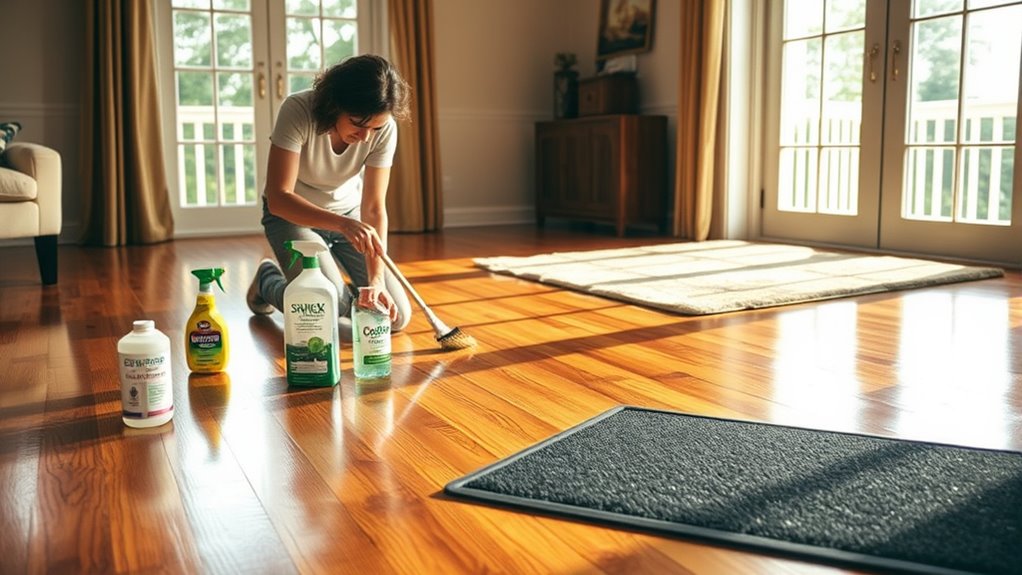
Although installing rugs and mats helps reduce slipperiness, you need to maintain and monitor your hardwood floors regularly to guarantee ongoing safety. Conducting routine floor inspections allows you to identify worn or damaged areas that may increase slip risks. Follow established safety guidelines to confirm your floor treatments remain effective and intact. Pay close attention to finish wear, moisture accumulation, and debris buildup, as these factors directly impact traction. Implement a scheduled cleaning protocol using non-slip, hardwood-friendly products to preserve surface grip. Regularly assess high-traffic zones and entryways for potential hazards. By staying proactive with maintenance and monitoring, you maintain not only the aesthetic appeal but also the functional safety of your floors, granting you the freedom to move confidently throughout your space.


